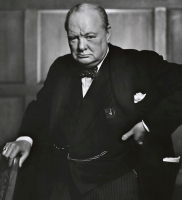
The death of 12-year-old Palestinian boy Mohammed al-Durra by “gunfire from the direction of the Israeli” forces, as reported by French TV reporter Charles Enderlin, was huge world news eight years ago. But it now seems that what we saw was not what actually happened. The dramatic footage of the youngster crouched beside his father
Links
Sheba Medical Centre
Melanie Phillips
Shariah Finance Watch
Australian Islamist Monitor - MultiFaith
West Australian Friends of Israel
Why Israel is at war
Lozowick Blog
NeoZionoid The NeoZionoiZeoN blog
Blank pages of the age
Silent Runnings
Jewish Issues watchdog
Discover more about Israel advocacy
Zionists the creation of Israel
Dissecting the Left
Paula says
Perspectives on Israel - Zionists
Zionism & Israel Information Center
Zionism educational seminars
Christian dhimmitude
Forum on Mideast
Israel Blog - documents terror war against Israelis
Zionism on the web
RECOMMENDED: newsback News discussion community
RSS Feed software from CarP
International law, Arab-Israeli conflict
Think-Israel
The Big Lies
Shmloozing with terrorists
IDF ON YOUTUBE
Israel's contributions to the world
MEMRI
Mark Durie Blog
The latest good news from Israel...new inventions, cures, advances.
support defenders of Israel
The Gaza War 2014
The 2014 Gaza Conflict Factual and Legal Aspects
Fanning flames with a hoax
The death of 12-year-old Palestinian boy Mohammed al-Durra by “gunfire from the direction of the Israeli” forces, as reported by French TV reporter Charles Enderlin, was huge world news eight years ago.
But it now seems that what we saw was not what actually happened. The dramatic footage of the youngster crouched beside his father as “Israeli” bullets whizzed by him, the scenes of his death and his father’s wounding were ghastly but compelling viewing.
Locally, it was reported by The Daily Telegraph, The Australian, The Financial Review and The Sydney Morning Herald, the latter stating unequivocally that “Rami (sic) Al-dura, 12 (was) killed by Israel fire while cradled in his father’s arms”.
Invocations of the young al-Durra’s death became a regular ritual on Palestinian television, songs encouraging children to join him in martyrdom were written, streets were named after him, mothers were exhorted to encourage their infants to be like him, his image was even used on stamps.
The murderers of Wall Street Journal reporter Daniel Pearl used the clip when they posted footage of their nauseating crime on the internet.
The al-Durra imagery truly became, in the words of one Canadian journalist, “the farce that launched a thousand suicide bombers”.
Doubts arose about the footage shot by a Palestinian cameraman for the network France 2 when it was revealed the same person had been responsible for faking other news footage.
Those doubts were upheld when a number of investigations, by both independent and Israeli officials including the Israeli army, were concluded.
The Israeli army, using the angles of the shots, demonstrated that the gunfire could not have come from their position. The independent investigators led by Philippe Karsenty, a director of the Media-Ratings watchdog (http://www.m-r.fr), went further and said the scenes had been staged and that report was a “hoax”.
He was successfully sued for defamation but opted to press on to a higher court.
Last week, he was vindicated. Senior French judge Laurence Trebucq, sitting on the Court of Appeals in the Palais de Justice, acquitted Karsenty and ruled against France 2 and its reporter, Enderlin. They now intend to take the matter to the nation’s highest court, which rules on technicalities, not facts.
Judge Trebucq’s meticulous ruling upheld - point-by-point - Karsenty’s case against the al-Durra footage.
The inflammatory report was essentially destroyed when he ordered the government-owned broadcaster to produce all the raw footage shot of the incident and instead of a few seconds of film, an 18-minute excerpt, still not the complete sequence, was shown to the court.
It revealed staged battle scenes, rehearsed ambulance evacuations - but nothing to substantiate the toxic television report.
No shots were seen coming from the Israeli position, no bullets were shown striking the boy, no blood was seen on the father’s shirt, though he was said to have cradled his eviscerated son in his arms, and the boy is seen to move, even to look conspiratorially at the television camera, when he is supposed to have been dead.
The judge found that evidence submitted by the government-owned television channel - statements provided by the cameraman - were “not perfectly credible either in form or content”.
The credibilty of the French press, which had largely sided with France 2, has been seriously damaged by the finding.
As Karsenty said in a statement he released after he was exonerated, he and others who questioned the authenticity of the TV report were branded as “extremists and dangerous fanatics”, forcing him to conclude that critical thinking was dead or dying in France.
Consistent with that view, there has been almost no coverage of the court’s finding in France over the past six days, though it has received international attention from The Wall Street Journal and a number of other publications.
Nor does a search of the files reveal that it has been reported in any major Australian newspaper, including those like The Sydney Morning Herald and The Age, which carried close to 20 stories and references, most of them sympathetic, to al-Durra.
Given the global importance on the Middle East conflict, the French judge’s ruling is of great significance.
Not significant enough for our own government-owned television network’s Media Watch program however.
On Monday, its international coverage was restricted to an innocuous hoax by an internet traffic booster and the re-use of an Aceh tsunami picture in a story on the Burmese crisis.
Given the manner in which this infamous hoax has been used to inflame dangerous passions, shouldn’t our media watchdog have made it a priority to set the record straight before these images are manipulated to fuel more violence?
# reads: 1985





















